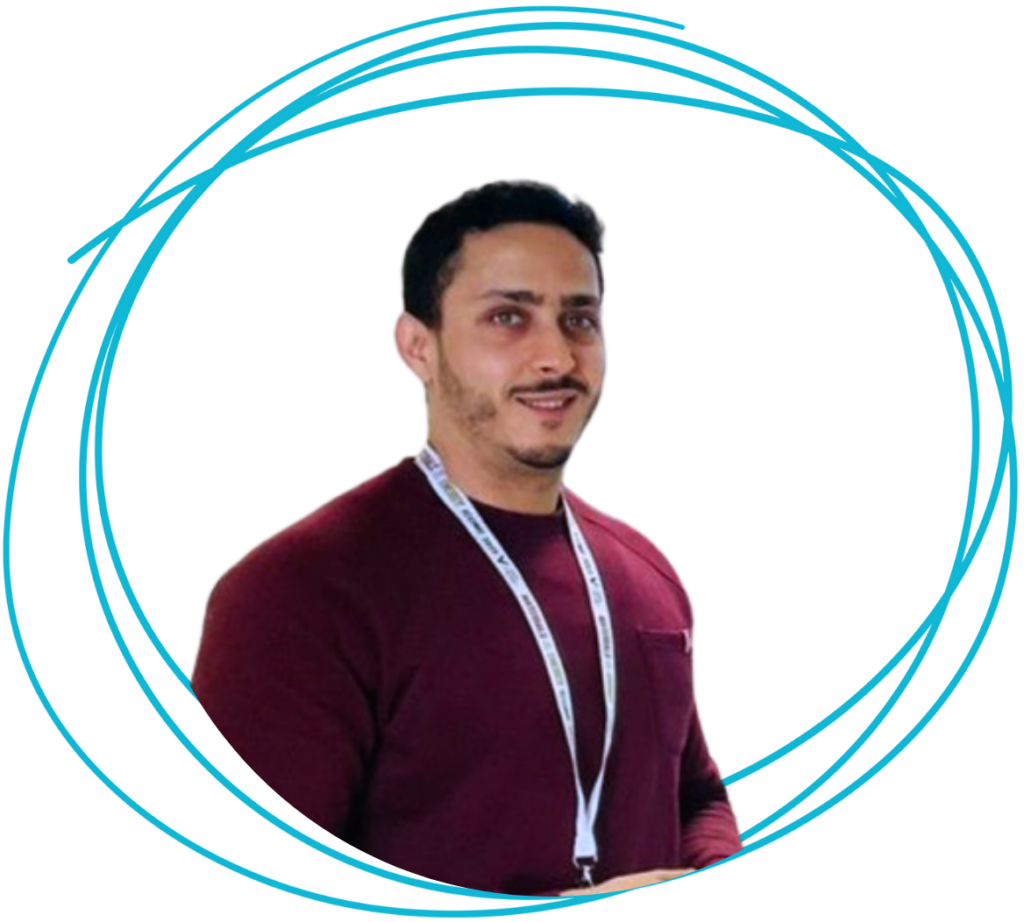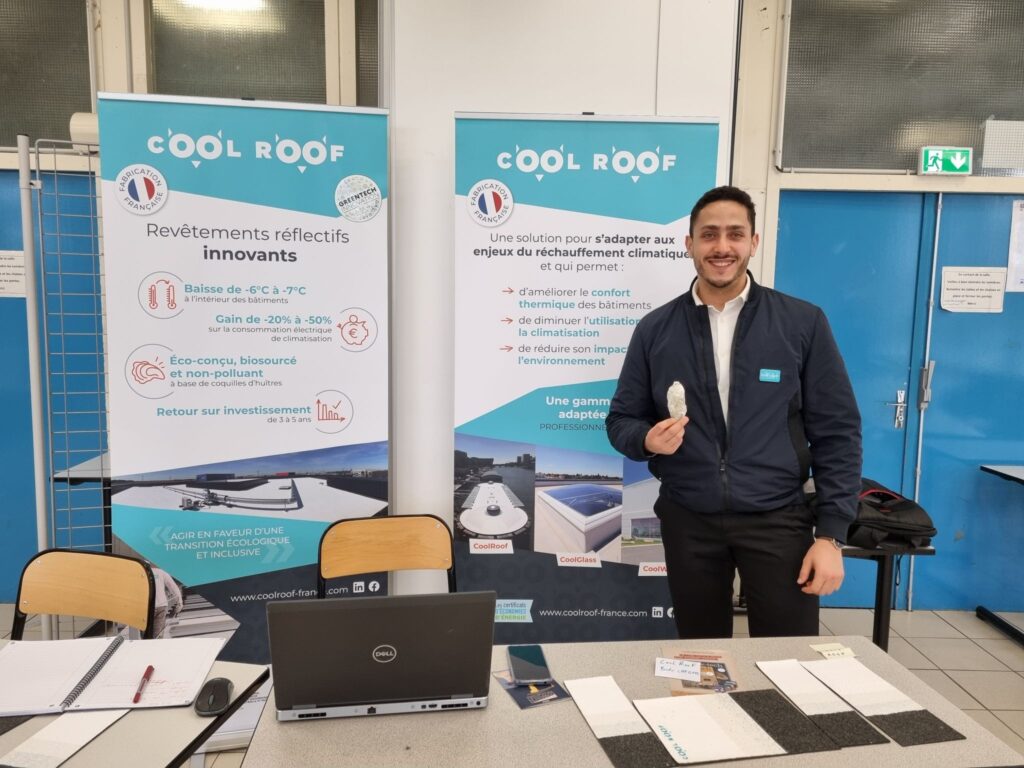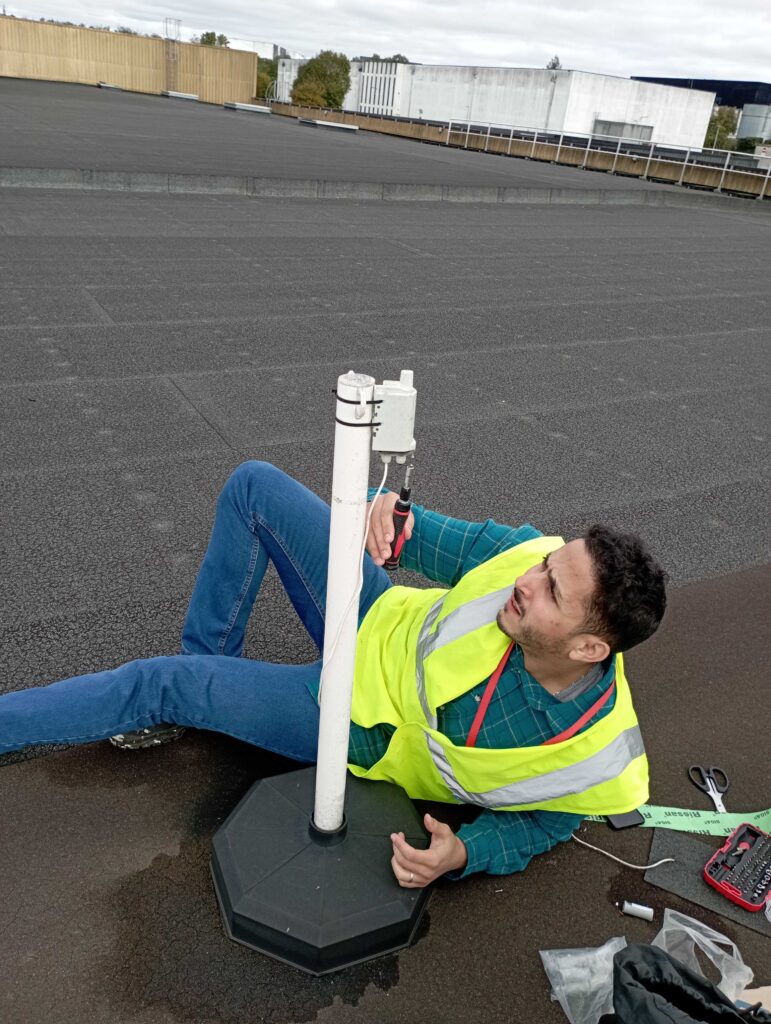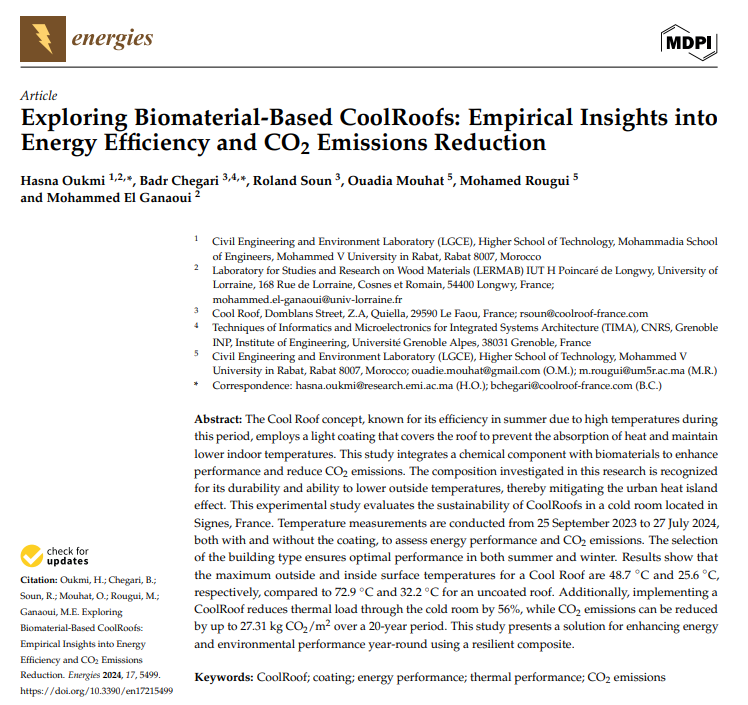
Badr Chegari is the Head of Innovation and R&D in Cool Roof, a company engaged in the transition environmental and innovation in the field of cool roofing. Thermicien training, its course combines academic research and practical application of the thermal sustainability in the building sector. In this interview, he looks back on his career, his motivations and his responsibilities within Cool Roof.
Badr : The building’s heat has arrived quite by accident in my life. In high school, Ihad not intended to be accurate. My choice of chain was more ofa default orientation. However, cis in the course of my master’s that I’ve discovered a real interest in this area, whichis then transformed into a true passion. This passion mhas naturally led her to pursue a phd thesis on the topic, where Ihave fully realized theimportance and the challenges of the heat applied to the building.
Work on the building envelope, for me, it is get to the root of the energy transition.
Knowing that buildings account for 40% to 45% of the electric energy consumption, it is obvious that without improving the performance of the envelope – by optimizing its thermal characteristics, passive –, we will not be able to significantly reduce our energy footprint. This vision really has me motivated to continue in this field.
Badr : The competition Solar Decathlon Africa has been a milestone in my professional career. It is an international competition initiated by the Department ofEnergy in the United States and takes place every two years in a different country.
For me, it was the opportunity to test thermal solutions optimized and implement simulations in-depth. It has strengthened my experience in the field ofoptimization of the parameters of thermo-physical properties of the building envelope.
My core business is based on the art to combine and optimize different variables to achieve ambitious objectives, with priority given to the energy performance, the preservation of the environment and thermal comfort.

Badr : I’ve thought a lot about this issue.
of course, the transition to the private sector raises ethical issues, particularly in the current context where the research of the public must, alas, to cope with growing challenges in terms of funding.
The university allows me to conduct extensive research and have time to dig into complex topics, but it offers little financial means. Sometimes, this limits the scope of the projects.
The private sector, in contrast, has capital by which to achieve solutions and impacting the concrete society.
In Cool Roof, for example, the resources available that allow us to advance applied research projects on the ground, with tangible results. It is very rewarding, as a researcher, to be able to measure the success of a theoretical model once applied !
Finally, I believe deeply in the importance of human ties and the collective. Research and innovation should not be a solitary way ; it is exchanging, sharing our ideas and our doubts with the others advance. And in this, the private out of the silos disciplinary research and take a host of different profiles in projects based on theory, yet very sharp.
Badr : there are never two weeks the same ! My role is to oversee our three-pole techniques : the Offices of Studies in thermal, materials , and robotics. I therefore spend a lot of time in meetings with each division to ensure that the roadmap ahead in the right direction.
Then, there is the technical support for the customers. Some have a good knowledge of the aspects of thermal, so I make returns very, very specific.
My weeks are punctuated by meetings of feasibility, project tracking and debriefings on the return ofexperience (REX). There are also technical visits to special cases, implemented in instrumentation and controls, analytical evolution of the performance.

Finally, I’ve got my head in the simulations and projections, but feet are still on the roofs !
Badr : In parallel with my work in Cool Roof, I am conducting my research in order toget my HDR (Habilitation à Diriger des Recherches). This is a crucial step in the career ofa researcher mark a recognition of my scientific contributions and mwill open the possibility to supervise doctoral students, while deepening and diversifying my research projects.
For example, I co-authored this fall to an article published in a prestigious international journal, Energies from MDPI. I have been able to mobilize the empirical data of a building site, a Cool Roof made Signs. This type of publication is proof of our commitment in R&D in Cool Roof.
Even if it is not always easy to share my time between my work and my research, I draw from empirical data valuable and new ideas inspired by the reality on the ground.

Badr : This is a very good question, especially because we are currently the only company of cool roofing that invests in applied research.
Our R&D brings us to three essential skills : the technical mastery, the rigorous scientific evaluation and the sustainable support to the customers.
We have chemists, researchers in thermal and materials, as well as engineers in robotics that test and validate each aspect of our products. Our studies are thorough and based on concrete evidence.
Our goal is not to fall into the greenwashing. Each project is monitored, analyzed, and evaluated with accuracy the performance of our solutions are real and measurable.
And finally, our returns ofexperience enable us to guarantee customers a real return on investment, by providing them with tailored solutions, sustainable and cost effective.
Badr : Yes, the future offers great opportunities. I am committed to continue to share my knowledge and to support young researchers in their journey. Getting my HDR will allow me to me to invest even more in research, contributing to advances in both academic and applied.
I see real opportunities in the coupling of passive solutions such as cool roofing with solar panels. Such synergy opens the way to a significant optimisation of energy efficiency while contributing to the contemporary challenges of sustainability.
The cooperation between research and industrial practice , for me, is essential to move forward in the energy transition, environmental and social.
Badr : The first thing that I would say, it is not to be afraid to take the time to find their way. My own journey was not a straight line ! Sometimes, the passions reveal themselves in the course of the road, through the experience. Then I would advise them to explore, to try, even if it means getting off the beaten track, or even be wrong.
Then, I would also say thatin research, and especially in sustainable innovation, it is important to be patient and persevering. The results are often long to obtain, and the research requires a lot of discipline and resilience.
Sometimes, the professional reality seems so far away when we are immersed in theory, but we must not lose sight of thepractical impact that research can have on the field.
What I’ve learned is that even small steps can have big effects if they are applied properly.
Thanks to Badr for this interview ! It has allowed us to highlight the crucial role of research andinnovation in the energy transition. Fort of his career and his expertise in thermal, it embodies the commitment of Cool Roof for a scientific approach and responsible, in the service of solutions of the future.
What other challenges and projects await this company dedicated to the innovation ? The domain of the cool roofing has probably not finished surprising ! And you, what passive solutions do you see for the energy transition in the building industry ? Follow and meet with us on LinkedIn, Facebook and Instagram.
also, Follow Badr on LinkedIn and ResearchGate for news of its activities, projects, and scientific publications.